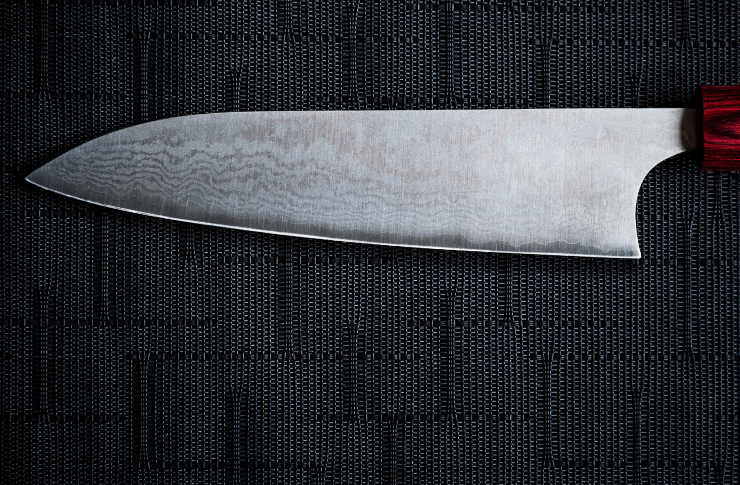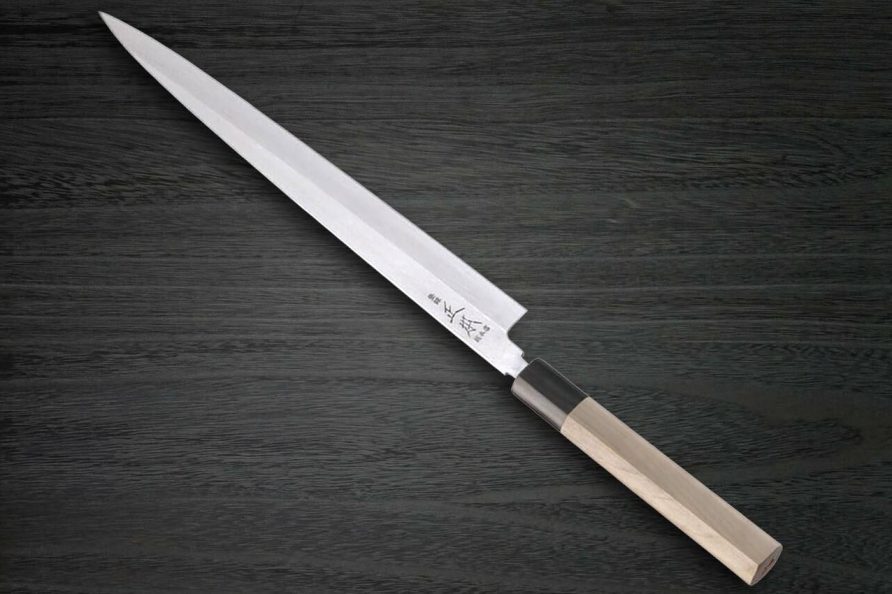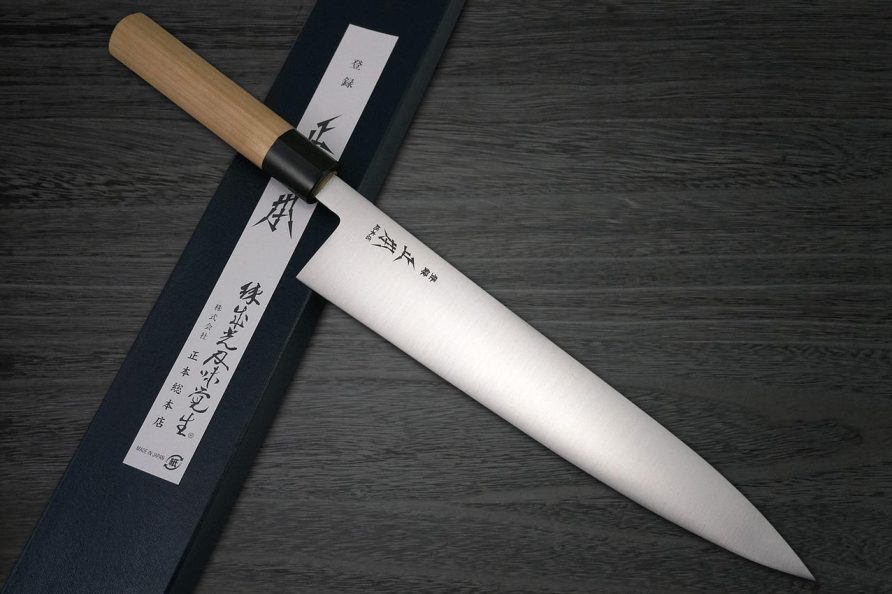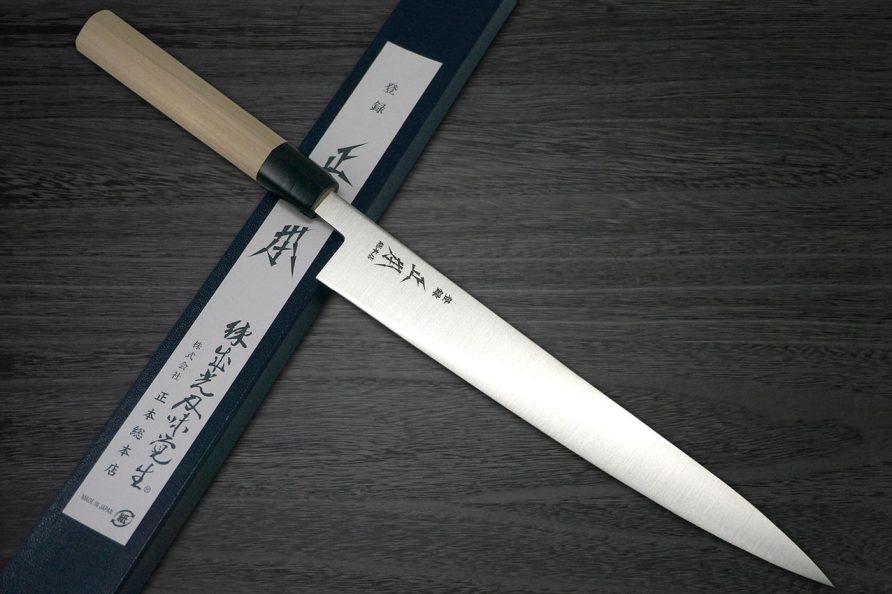
The Santoku knife, often referred to as the Japanese all-purpose knife, is a highly versatile tool in the culinary world. Let’s explore its distinctive characteristics:
- Short, Wide Blade: Santoku knives typically have a short, wide blade, usually 5 to 7 inches long. Its size is ideal for home use, and the extra width allows it to scoop up chopped food easily.
- Double-Bevel Edge: Unlike many traditional Japanese knives that have a single-bevel edge, the Santoku knife features a double-bevel edge. This means the blade is sharpened on both sides, making it suitable for both right and left-handed users.
- “Three Virtues”: Santoku translates to “three virtues” or “three uses,” which are slicing, dicing, and chopping. This name points to the knife’s versatility, as it is designed to perform well at many different kitchen tasks.
- Flat Cutting Edge: The edge of a Santoku knife is flat, which means it makes full contact with the cutting board and allows for more precise cuts.
- Granton Edge: Many Santoku knives have a Granton edge—dimples or grooves along the edge of the blade—to reduce friction and prevent food from sticking to the blade.
- Balanced Weight: A Santoku knife typically has a balanced weight between the blade and the handle, which gives the user a better grip and makes it comfortable to use for extended periods.
- Traditional Craftsmanship: Like many Japanese knives, each Santoku knife is a testament to high-quality craftsmanship. Many are hand-forged and carefully sharpened, maintaining the long-standing tradition of Japanese knife-making.
In conclusion, the Santoku knife is a true embodiment of versatility, precision, and tradition in Japanese culinary arts. Whether you’re a professional chef or a home cook, this all-purpose knife can significantly enhance your kitchen experience, turning each cut into an easy, precise task.



